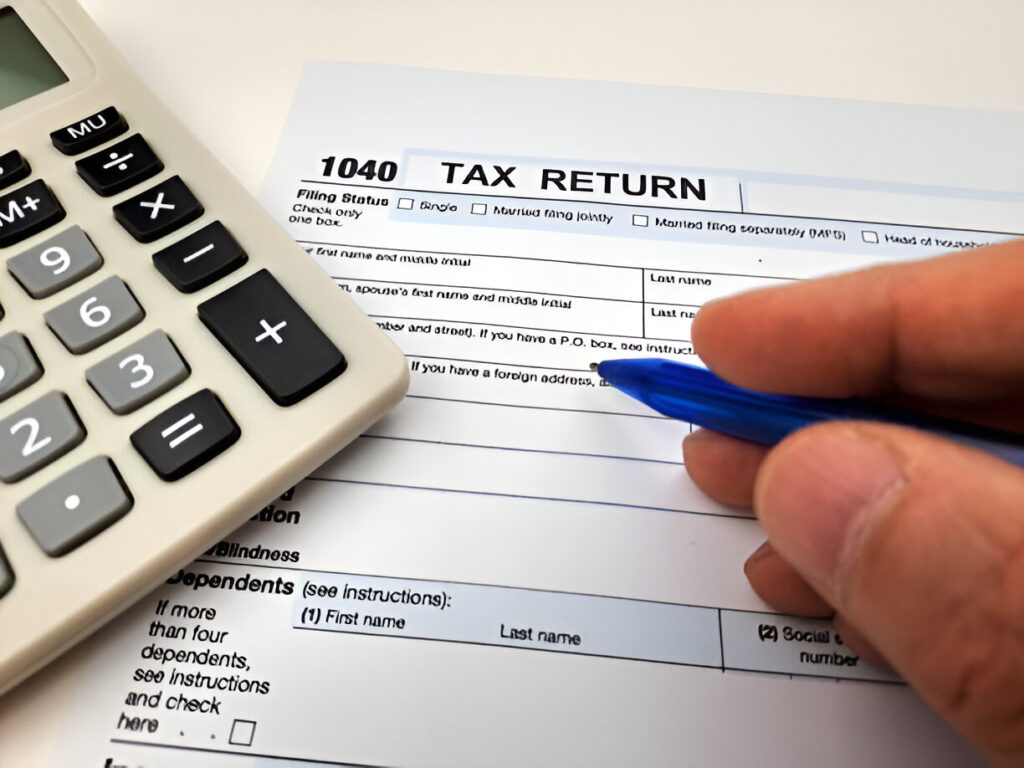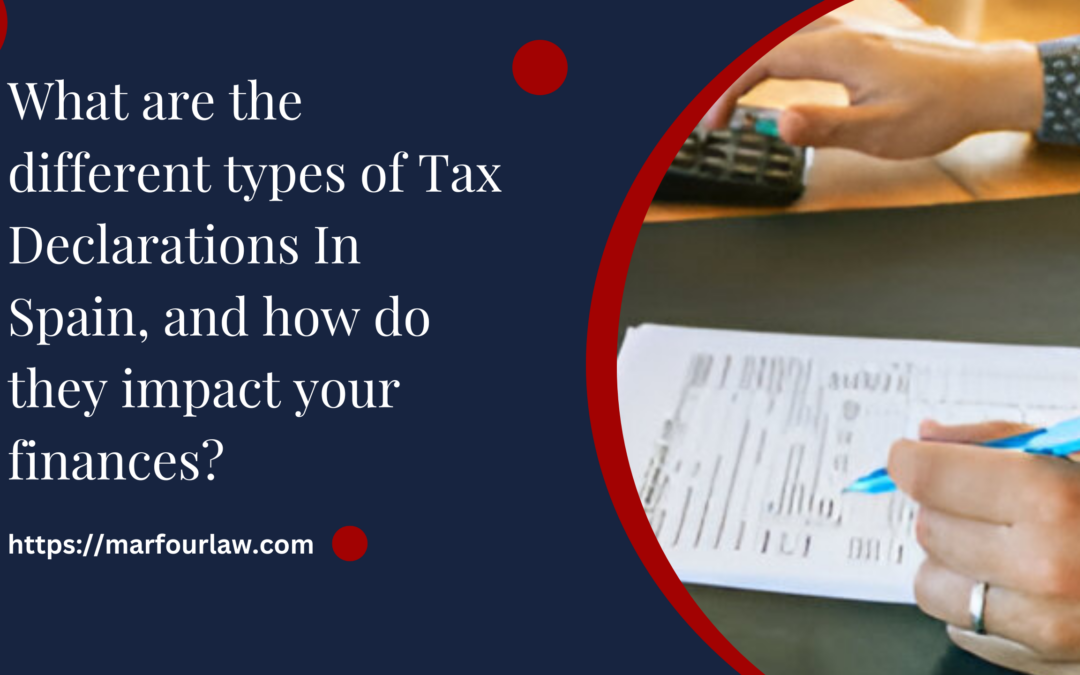The types of tax declarations in Spain can feel like a complex puzzle, but they are an essential part of financial life here. Whether you are a resident or non-resident, understanding these tax obligations is crucial. So, what is a tax return, and how does it work in Spain? In this guide, we will break down the different types of tax declarations you may encounter, making sure you are well-prepared to handle them.
How to Filing Your Income Tax Declarations In Spain?
Filing a personal income Tax Declarations In Spain is a significant responsibility for anyone earning income within the country. This process ensures that you report all your earnings accurately and pay the correct amount of tax. Whether you are a resident or a foreigner with income from Spanish sources, understanding the ins and outs of this tax declaration can help you manage your finances effectively and avoid potential issues with the tax authorities.
What Is the Personal Income Tax Declarations In Spain?
The personal income Tax Declarations In Spain, also known as “Declaración de la Renta” or “IRPF” (Impuesto sobre la Renta de las Personas Físicas), is a comprehensive report that individuals submit to the Spanish tax authorities. This report includes details about all sources of income, such as salaries, rental income, and investment earnings. The goal is to calculate your total tax liability for the year based on your financial situation.
Key Forms and Documentation Required for Personal Income Tax Declaration
To file your income tax declaration, you will need to use Modelo 100, the official form for reporting personal income. Here is a rundown of what you will need to prepare:
- Income Statements: Gather statements from all sources of income, including your salary, rental properties, and any dividends or interest earned.
- Expense Receipts: Collect receipts for any deductible expenses, such as work-related costs, mortgage interest, and charitable donations.
- Personal Identification: Have your identification documents ready, such as your NIE (Número et al.) or DNI (Documento et al.), depending on your residency status.
Steps to File Your Personal Income Tax Return
Filing your personal income tax return in Spain involves several key steps:

Collect Your Documents:
Begin by gathering all necessary documents that detail your income and expenses. This includes salary slips, bank statements, and any other relevant paperwork.
Complete Modelo 100:
Fill out the Modelo 100 form with all required information. You will need to input details about your income, expenses, and any applicable deductions or credits.
Submit Your Tax Return:
Once you have completed the form, submit it to the Spanish tax authorities. This can be done online via the Agencia Tributaria’s website or in person at a local tax office.
Pay Any Taxes Owed:
After submitting your return, calculate any taxes owed. If you have a tax liability, you will need to make the payment by the specified deadline to avoid penalties.
Important Deadlines and Filing Periods
The personal income tax return filing period in Spain typically runs from April to June of the year following the tax year. For example, for the tax year 2023, you would file your return between April and June 2024. Be sure to keep track of these deadlines to avoid late fees or penalties.
Common Deductions and Tax Credits
Spain offers several deductions and tax credits that can help reduce your overall tax liability. Here are some common ones:
- Deduction for Mortgage Interest: If you own a home and have a mortgage, you may be eligible for a deduction on the interest paid.
- Charitable Contributions: Donations to registered charities can be deducted from your taxable income.
- Work-Related Expenses: Certain expenses directly related to your work, such as professional training or work equipment, may also be deductible.
How to Handle Special Cases and Complex Situations?
There are some situations where the personal income tax declaration can get more complicated:
Income from Abroad:
If you have income from foreign sources, you may need to report this in your Spanish tax return. This could include salaries, pensions, or investments from outside Spain.
Capital Gains:
If you have sold assets such as property or stocks, you will need to report any capital gains. There are specific rules and rates for these types of income.
Multiple Sources of Income:
If you have income from various sources, such as multiple jobs or rental properties, ensure you report all sources accurately. It is important to include every source to comply with Spanish tax laws.
What to Do If You Make a Mistake on Your Tax Return?
If you realize that you have made an error on your submitted tax return, do not panic. You can file a correction or amendment, known as a “declaración complementaria.” This process allows you to correct mistakes and adjust your tax liability. It is best to address any errors as soon as possible to avoid potential penalties.

What is Value Added Tax (VAT) and What Is Its Importance?
Value Added Tax (VAT) in Spain, known as “Impuesto sobre el Valor Añadido” (IVA), is a tax applied to the sale of goods and services. It is collected at each stage of production and distribution, with businesses charging VAT on their sales and reclaiming VAT on their purchases. This system ensures that tax is only paid on the value added at each stage of production rather than the total value of the product or service.
Understanding VAT is essential for businesses as it impacts pricing, profitability, and compliance with tax regulations. Proper VAT management helps businesses avoid penalties and ensures accurate reporting to the tax authorities.
Forms Used for VAT Declarations
In Spain, businesses use specific forms to report and pay VAT. The primary forms include:
- Modelo 303: This is the main form used to report VAT on a quarterly basis. It details the VAT collected from sales and the VAT paid on purchases, allowing businesses to calculate the net VAT payable or refundable.
- Modelo 390: This is an annual summary form that consolidates all VAT returns for the year. It provides a comprehensive overview of the VAT collected and paid throughout the year and is used to verify the accuracy of quarterly returns.
How to Complete Modelo 303 for Quarterly VAT Returns?
Filing Modelo 303 involves several steps:
- Gather Your Documentation: Collect all records of sales and purchases, including invoices and receipts. You need detailed information on the VAT charged on sales and the VAT paid on purchases.
- Calculate VAT: Determine the total VAT collected from sales and the total VAT paid on purchases. The difference between these amounts will be the VAT you owe or can reclaim.
- Fill Out the Form: Complete Modelo 303 by entering the calculated VAT amounts. This form requires details about your business activities, the VAT rates applied, and the total VAT amounts.
- Submit the Form: Submit Modelo 303 to the Agencia Tributaria, either online or in person. The form is typically filed on a quarterly basis, with deadlines usually at the end of January, April, July, and October.
Filing Modelo 390 for Annual VAT Summary
The Modelo 390 form summarizes all VAT activities for the year and ensures that quarterly returns are accurate. Here is how to handle it:
- Compile Quarterly Returns: Gather all Modelo 303 forms submitted throughout the year. This will help you verify that all information is accurate and complete.
- Complete the Form: Enter the totals from your quarterly returns into Modelo 390. This form consolidates these figures to provide a complete overview of your VAT obligations for the year.
- Submit the Form: File Modelo 390 with the Agencia Tributaria by the end of January following the tax year. This ensures that your VAT records are up-to-date and correct.
Key Deadlines for VAT Declarations
VAT declarations in Spain follow specific deadlines:
- Quarterly VAT Returns (Modelo 303): Due at the end of the month following the end of each quarter (e.g., April 30th for the first quarter, July 31st for the second quarter, etc.).
- Annual VAT Summary (Modelo 390): Due by January 30th of the year following the tax year. This provides a comprehensive summary of VAT activities for the previous year.
Missing these deadlines can result in penalties or interest on any taxes owed, so it is important to stay organized and adhere to the filing schedule.
Common Issues and Solutions in VAT Reporting
When dealing with VAT declarations, businesses may encounter several issues:
- Errors in Calculations: Mistakes in calculating VAT can lead to discrepancies in the amount owed or refunded. Double-check your calculations and ensure reporting accuracy.
- Inaccurate Invoices: Ensure that all invoices comply with VAT regulations, including correct VAT rates and detailed information. Inaccurate invoices can lead to reporting issues.
- Late Filings: Missing deadlines can result in fines. Set reminders and keep track of filing dates to avoid penalties.
What Is Non-Resident Income Tax Declarations In Spain?
The Non-Resident Income Tax Declarations In Spain, known as “Impuesto sobre la Renta de los No Residentes” (IRNR), is a tax that non-residents must pay on income earned from Spanish sources. This includes earnings from rental properties, investments, and other forms of income originating in Spain. Even if you are not a resident, you must comply with Spanish tax regulations for any income derived from the country.

Forms and Documentation Required for Non-Resident Income Tax Declaration
To file a Non-Resident Income Tax Declaration, you will need specific forms and documents:
- Modelo 210: This is the main form used for declaring income and paying tax on various types of income from Spanish sources. It is used for non-residents reporting income such as rental income, interest, or dividends.
- Modelo 211: This form is used for income tax on the sale of Spanish property. If you sell a property in Spain, you need to complete this form to report the sale and pay any taxes due.
- Identification Documents: Ensure you have your passport and any relevant documentation that proves your non-resident status and income sources.
How to Complete Modelo 210 for Non-Resident Income Tax
Filing Modelo 210 involves several key steps:
- Gather Your Income Details: Collect all documentation related to your Spanish income. This includes rental income statements, investment income reports, and any other relevant financial records.
- Fill Out the Form: Complete Modelo 210 with information about your income, deductions, and tax liability. This form requires details such as the type of income, the amount earned, and the corresponding tax rate.
- Submit the Form: Submit Modelo 210 to the Agencia Tributaria, either online or by mail. The deadline for filing this form is typically within the first 20 days of the month following the income payment.
Filing Modelo 211 for Property Sales
If you have sold property in Spain, you must file Modelo 211. Here is how:
- Report the Sale: Enter details of the property sale, including the sale price and acquisition cost.
- Calculate the Tax: Determine the tax based on the capital gains from the sale. The tax rate for non-residents on capital gains is generally 19% for EU/EEA residents and 24% for non-EU/EEA residents.
- Submit the Form: File Modelo 211 with the Agencia Tributaria and pay any tax due. This form must be submitted within one month of the property sale.
Key Deadlines for Non-Resident Income Tax Declaration
For non-residents, the deadlines for income tax declarations are:
- Modelo 210: File this form quarterly if you receive periodic income, such as rental payments. If you receive income sporadically, file it within 20 days of the payment date.
- Modelo 211: File this form within one month of the property sale. Failure to meet this deadline can result in penalties.
Common Deductions and Tax Credits for Non-Residents
While non-residents generally have fewer deductions available, some specific deductions and credits might apply:
- Deduction for Spanish Property: Non-residents who own property in Spain might be eligible for deductions related to property maintenance or mortgage interest.
- Tax Treaties: Spain has tax treaties with many countries that might affect the amount of tax you owe. Check if your country has a treaty with Spain that could reduce your tax liability.
FAQs
What is the Non-Resident Income Tax Declaration?
The Non-Resident Income Tax Declaration, known in Spain as “Impuesto sobre la Renta de los No Residentes” (IRNR), is a tax obligation for individuals who earn income from Spanish sources but do not reside in Spain. It ensures that non-residents pay the correct amount of tax on their Spanish income, including rental income, investments, and property sales.
Who needs to file a Non-Resident Income Tax Declaration?
Anyone who earns income from Spanish sources but does not live in Spain is required to file a Non-Resident Income Tax Declaration. This includes individuals with rental income, investment earnings, or who have sold property in Spain.
How do I file Modelo 210?
To file Modelo 210, you need to gather details about your Spanish income, such as rental income or investment returns. Complete the form with these details, calculate your tax liability, and submit the form to the Agencia Tributaria. This can be done online or by mail, depending on your preference and the available options.
What is the purpose of Modelo 211?
Modelo 211 is used to report and pay tax on the sale of Spanish property. If you sell a property in Spain, you must use this form to declare the capital gains and pay the corresponding tax. This form should be submitted within one month of the property sale.
Conclusion
Knowing the types of Tax Declarations In Spain is crucial for ensuring compliance with Spanish tax laws. From personal income tax and VAT to corporate tax and wealth tax, each declaration serves a specific purpose and involves different forms and deadlines. By familiarizing yourself with these declarations, you can better manage your tax obligations and avoid potential issues with the tax authorities. Whether you are a resident or non-resident, staying informed about the different types of tax returns and their requirements will help you navigate the Spanish tax system more effectively.

